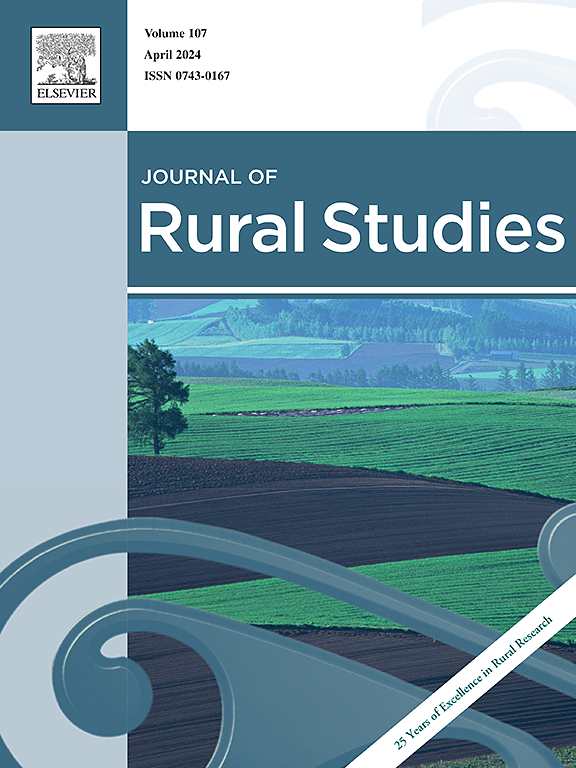Exploring spatial restructuring of villages and towns in rural China: Insights from villagers’ subjective willingness
IF 5.1
1区 社会学
Q1 GEOGRAPHY
引用次数: 0
Abstract
The spatial patterns of rural settlements are theoretically assumed to be a town-led centralized pattern in which the town is the center and the villages are the periphery. However, with the improvement of rural transportation infrastructure and the urbanization of lifestyles, rural residents' locational choices of residence and employment become increasingly diversified, catalyzing the spatial redistribution of residence and employment functions to reorganize the spatial patterns of towns and villages. To bridge the literature gap in understanding rural spatial restructuring driven by the changes of residence and employment functions, this paper analyzed villagers' subjective willingness to live and work in the town and explored rural spatial restructuring mechanisms by using survey data covering 1158 villagers from 55 townships in China. The survey results showed that villagers' willingness to live and work in the town is not consistent, and the former is usually weaker than the latter. Individual preferences and environmental characteristics together contribute to different willingness. A multinomial logistic model was constructed to explore villagers’ expectations for four spatial patterns, namely town-led centralized (TC) pattern, concentrated residence (CR) pattern, concentrated employment (CE) pattern, and decentralized (DC) pattern. Villagers have different preferences for different patterns. The location, industry, amenities of the town mainly determine the evolution towards different spatial patterns. The findings open up a novel perspective for understanding rural spatial restructuring and support for optimizing spatial patterns of villages and towns.
中国农村乡镇空间重构探析:来自村民主观意愿的洞察
农村聚落的空间格局在理论上被假设为以城镇为中心、以村庄为外围的以城镇为主导的集中式格局。然而,随着农村交通基础设施的完善和生活方式的城市化,农村居民居住和就业的区位选择日益多样化,促进了居住和就业功能的空间再分配,重构了城镇和村庄的空间格局。为弥补居住与就业功能变化驱动乡村空间重构的文献空白,本文通过对中国55个乡镇1158名村民的调查数据,分析了村民在城镇居住与工作的主观意愿,探讨了乡村空间重构机制。调查结果显示,村民在城镇生活和工作的意愿并不一致,前者通常弱于后者。个体偏好和环境特征共同导致了不同的意愿。构建多项logistic模型,探讨了村民对城镇主导的集中(TC)模式、集中居住(CR)模式、集中就业(CE)模式和分散(DC)模式四种空间格局的期望。村民对不同的模式有不同的偏好。城镇的地理位置、工业和便利设施主要决定了不同空间格局的演变。研究结果为理解乡村空间重构和优化村镇空间格局提供了新的视角。
本文章由计算机程序翻译,如有差异,请以英文原文为准。
求助全文
约1分钟内获得全文
求助全文
来源期刊

Journal of Rural Studies
Multiple-
CiteScore
9.80
自引率
9.80%
发文量
286
期刊介绍:
The Journal of Rural Studies publishes research articles relating to such rural issues as society, demography, housing, employment, transport, services, land-use, recreation, agriculture and conservation. The focus is on those areas encompassing extensive land-use, with small-scale and diffuse settlement patterns and communities linked into the surrounding landscape and milieux. Particular emphasis will be given to aspects of planning policy and management. The journal is international and interdisciplinary in scope and content.
 求助内容:
求助内容: 应助结果提醒方式:
应助结果提醒方式:


